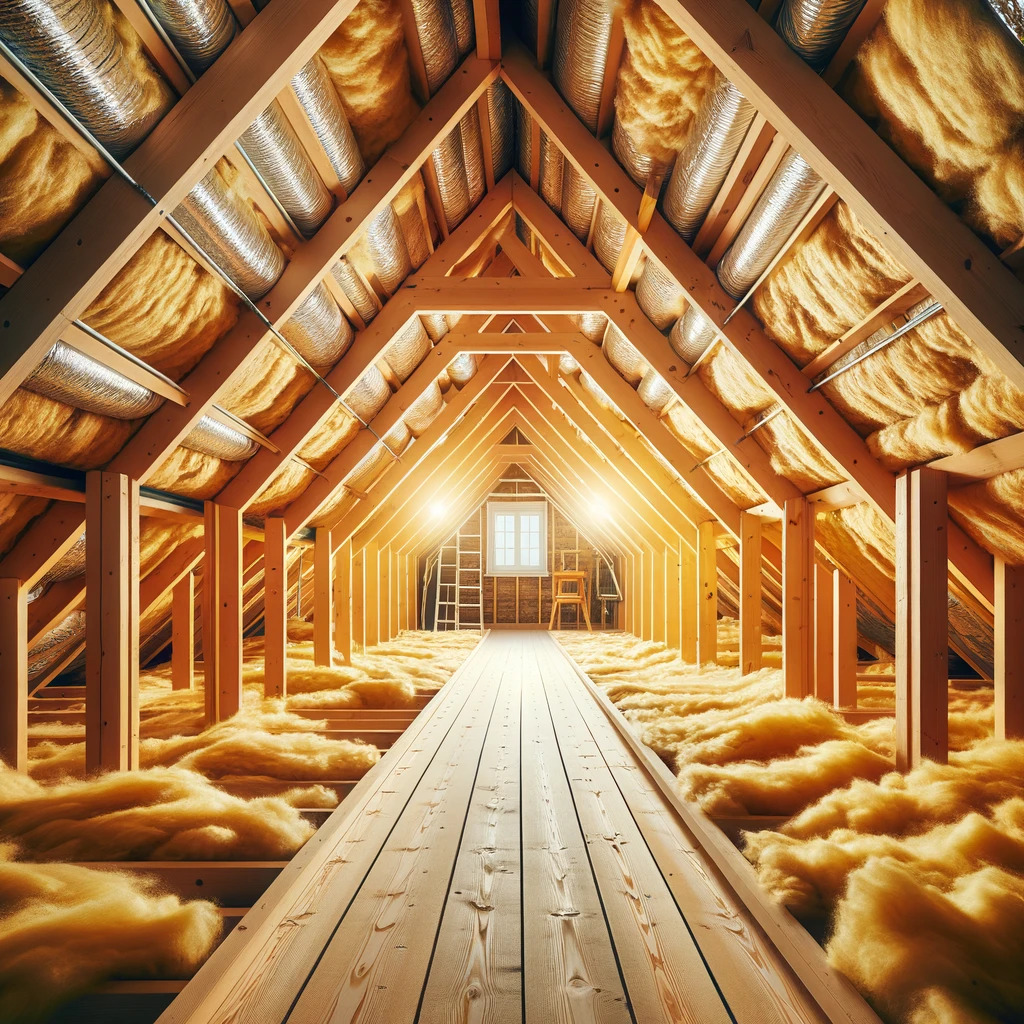Heavy rainfall can be a true test of a home’s resilience, particularly for the unsung hero of structural integrity – the attic. For homeowners, the aftermath of a storm often necessitates a prompt inspection to safeguard against the subtle yet serious consequences that may loom overhead.
The Hidden Dangers of Water Intrusion
Water’s penchant for invasion is unrivaled, often finding its way into the most vulnerable crannies of our abodes. Post-storm, attics can harbor moisture that, if left unchecked, leads to mold, mildew, and rot – the nemeses of healthy home living. The urgency to address these issues cannot be overstated; the longer moisture remains, the more it jeopardizes the structural components of your home, including beams and insulation.

Assessing the Severity of Attic Damage
Post-precipitation, the initial step is a thorough assessment. Look for telltale signs like water stains, damp insulation, or a musty odor, all red flags indicating the pressing need for repair. Remember, quick detection equates to less extensive – and less expensive – repairs.
Step-by-Step Guide to Address Attic Repairs After Heavy Rain
Step 1: Safety First

Before entering your attic, ensure it’s safe. Check for any electrical hazards or structural damage that could pose risks. If you suspect any danger, call a professional before proceeding.
Step 2: Initial Inspection
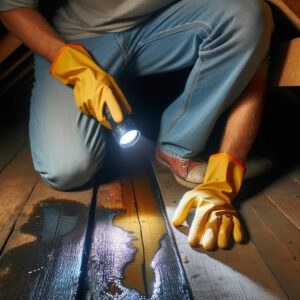
Don your protective gear (gloves, mask, eyewear) and use a flashlight to inspect the attic. Look for signs of water ingress, such as wet spots or stains on the attic floor, walls, or ceiling.
Step 3: Document the Damage

Take photos or videos of the damage for insurance purposes. Documenting everything before you move or alter anything is crucial for claims.
Step 4: Contain the Situation

If you find a small leak, contain it by placing a bucket or other container underneath to catch drips. For larger leaks, you may need to use waterproof tarps or sheets.
Step 5: Dry Out the Attic
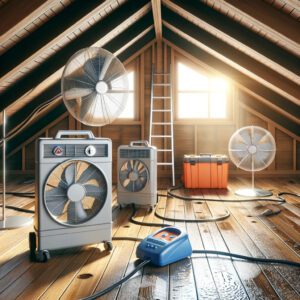
Ventilation is key. Use fans to circulate air and dehumidifiers to remove moisture. This helps prevent mold and mildew growth. Keep the attic hatch open to allow air to flow.
Step 6: Remove Wet Insulation
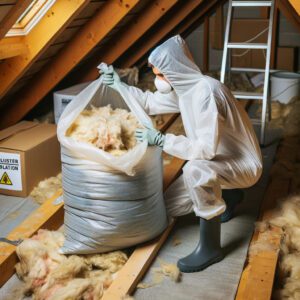
Wet insulation loses its R-value and can breed mold. Carefully remove it and dispose of it properly. Ensure you wear protective clothing during this process.
Step 7: Clean and Disinfect
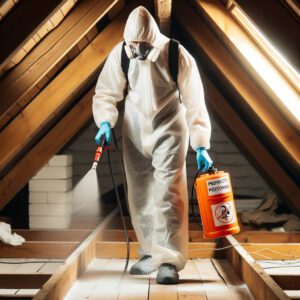
Once the wet materials are removed, clean the exposed areas with a mildewcide or a solution of water and bleach to disinfect and prevent mold growth.
Step 8: Call in Professionals
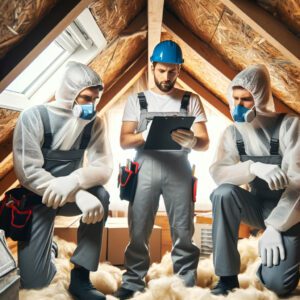
At this stage, it’s advisable to seek the expertise of roofing and insulation professionals. They can assess if there’s more extensive damage that isn’t immediately visible.
Step 9: Repair and Replace

Based on the professional assessment, repair any structural damage, replace the insulation, and address any roof issues. Ensure that materials used are of high quality and suitable for your climate.
Step 10: Future Proofing

Consider preventive measures such as better roof ventilation, waterproof barriers, or upgraded roofing materials to mitigate future rain damage.
Step 11: Maintain Regular Checks

After repairs are complete, conduct regular attic checks, especially after severe weather, to catch and address any new issues promptly.
Step 12: Review Your Insurance Policy

Understand what your insurance covers regarding attic and rain damage. It may be a good time to review your policy and consider adjustments for better coverage.
Professional Consultation: A Prudent Approach

While a keen-eyed homeowner can spot surface issues, underlying damage often requires the discerning gaze of a professional. Engaging with renovation experts or roofing specialists is a pivotal move to ensure a comprehensive understanding of any damage’s scope. They can provide a detailed inspection, spotlighting areas that DIY efforts might overlook.
Timely Repairs: A Preventative Strategy
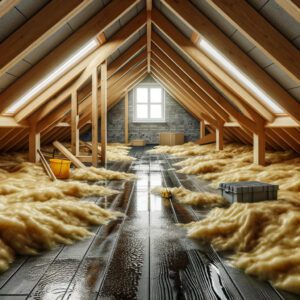
Prompt repairs are not just a response but a preventive strategy against future problems. Contractors specializing in attic renovation and roofing can offer solutions that reinforce your home’s defenses against the next deluge. Whether it’s replacing soggy insulation, sealing leaks, or fortifying roofing materials, each step is a bulwark against potential decay.
Conclusion: An Ounce of Prevention
In conclusion, the impact of heavy rain on your attic should never be underestimated. Proactive measures and timely interventions are the cornerstones of maintaining a sturdy, moisture-free attic. By recognizing the gravity of water damage and acting swiftly, homeowners can preserve the integrity and comfort of their living spaces.
Remember, a dry attic is more than a renovation goal; it’s an investment in the longevity and health of your home.
Brought to you by RenovationServices.com

